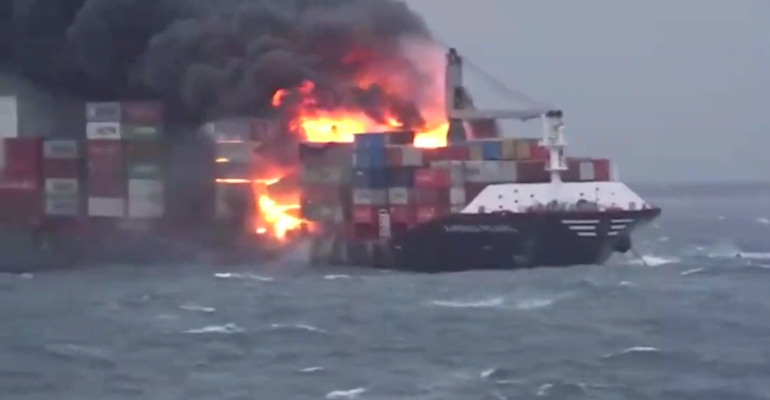“An increase in larger vessels leads to higher container cargo accumulation and exposure, a trend which could compound problems seen in recent years such as fires, groundings and port blockages,” the report claims.
According to Captain Shriram Pathak, a Senior Marine Risk Consultant at Allianz Commercial, Fire and Explosion is ranked the highest cause of loss at sea, which accounted for about 32% of losses.
“I would like to say that a positive to note is that shipping losses observed in 2022 were at their lowest level,” Capt Pathak told the Seatrade Maritime Salvage and Wreck conference in London today.
In total 38 ships were lost in 2022, which was down around 36% on the 59 vessels lost in the year before.
Capt Pathak pointed out that this is a positive given that, “When we look at 30 years ago, the global fleet was losing more than 200 vessels a year,” he added that it has been six years since a triple digit loss has been reported.
As total losses have declined, however, the number of incidents has not, with 3,032 reported incidents in 2022, compared to 3,000 a year earlier. “So, we didn't have losses, but we did have incidents and cases,” observed Capt Pathak.
With the increase in size of container ships and the number of containers that they can carry there is an increased risk of fire and explosions, which are the major causes of losses in cargo ships.
According to the Allianz report fire and explosions accounted for 13 incidents in 2013, by 2022 that had increased to 116 incidents. In 2022 eight of the 38 total losses were caused by fire.
Electric vehicles pose a new threat as a cargo, though it is not proven that there are more fires in EV’s than internal combustion powered cars there is an understanding that when fires do occur, they burn with a greater intensity and will release a toxic cocktail of poisonous gases.
Moreover, using standard firefighting equipment such as sprinklers and CO2 dispensers will have little impact on a lithium-ion battery fire because it does not rely on oxygen to develop.
Martii Simojoki, Senior Loss Prevention manager at Alandia Insurance, however, speaking at the same conference produced a contentious slide which claimed that much of the concerns about EV’s and lithium batteries are myths. Including the temperature levels, the toxicity of gases, and he said that around 80% of the fires with EVs are because of burning plastics in cars.
Simojoki said that his views were backed by studies from a number of Swedish and Norwegian academic and industry institutions.
However, there was disquiet from within the audience, with one delegate, Master Mariner Capt Adrian Scales of Brookes Bell, who labelled Simojoki’s slide as dangerous, highlighting the Freemantle Highway fire in August this year.
Scales said that the heat intensity had melted aluminium, so that there were 2 metre stalactites “hanging like icicles” from the roof of the deck. While the gas generated from more than 300 burning EV’s had exploded and the force had literally raised the vessel’s roof approximately 2 metre.
Copyright © 2024. All rights reserved. Seatrade, a trading name of Informa Markets (UK) Limited.
Add Seatrade Maritime News to your Google News feed.  |

